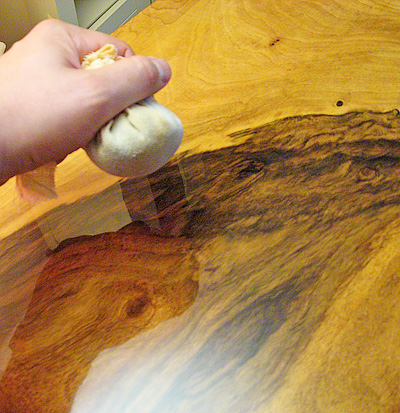 Refreshing traditional furniture polishes.
Refreshing traditional furniture polishes.
Fine furniture was about 400 years with a dissolved natural resin, the shellac polish, protected. Unlike modern clear coats, shellac was applied and polished in many wafer-thin layers. So first the wood pores were filled and then a resistant one, shiny layer built up. Today there is ready-to-use shellac that can even be applied with a brush. Anyone who wants to try the traditional method, proceeds as follows:
1 The old polish is made with scrapers (here is a gooseneck) and sandpaper (240he-grit) away. 2 To shorten the tedious shellac application a bit, the wood pores are filled with a primer. 3 A retouching pen fills in missing wood grain.
4 Der Blätterschellack wird in Spiritus eingeweicht und über Nacht gelöst.
5 Nun wird ein strammer Polierballen aus Baumwollfäden und -tuch in Handgröße gewickelt. 6 The shellac is applied with an incorporated pad and polished in layers in figure eight movements. Alternative: Finished polishes in different shades.
Pickling turns coniferous wood into the finest precious wood.
Old lacquered furniture is mostly made of cheaper softwood. With stain you can give them the appearance of the finest woods. It is best to use water stain, and do 13 a small stain test to determine the colour (1). There are still remains of resin, Glue or wax on the wood, they are scrubbed with curd soap (2). Basically, the wood is soaked before staining, hence the wood fibers , swell and can be sanded smooth (3).
The stain is evenly distributed wet on wet with a special stain brush (4).